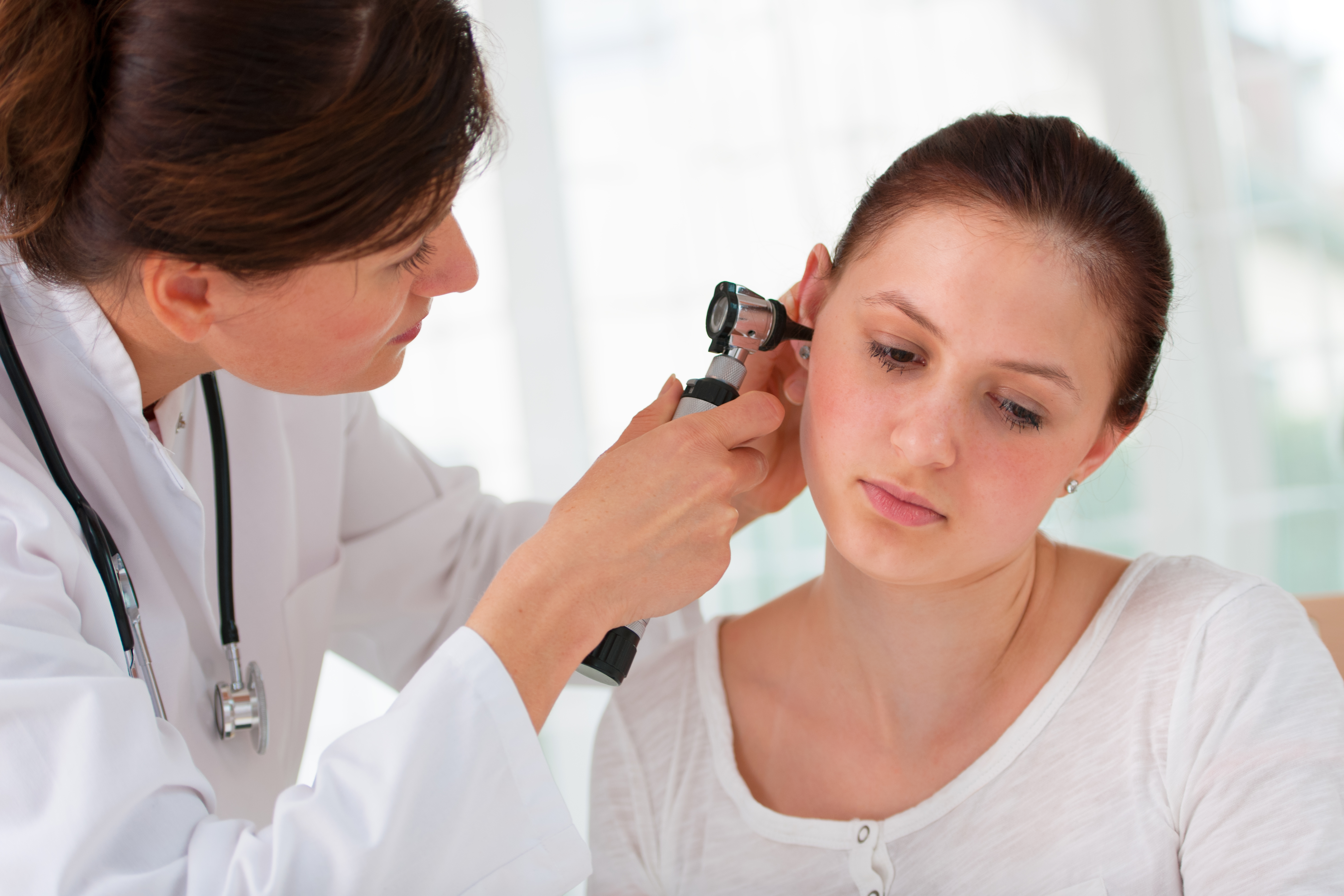DIAGNOSIS
Middle ear infections are usually diagnosed using a health history, a physical exam, and an ear exam.
The doctor uses a pneumatic otoscope to look at the eardrum for signs of an ear infection or fluid buildup. For example, the doctor can see if the eardrum moves freely when the pneumatic otoscope pushes air into the ear.
Other tests may include:
- Tympanometry, which measures how the eardrum responds to a change of air pressure inside the ear.
- Hearing tests. These tests are recommended for children who have had fluid in one or both ears (otitis media with effusion) for a total of 3 months. The tests may be done sooner if hearing loss is suspected.
- Tympanocentesis. This test can remove fluid if it has stayed behind the eardrum (chronic otitis media with effusion) or if infection continues even with antibiotics.
- Blood tests, which are done if there are signs of immune problems.
RECOMMENDED MEDICATIONS
A wait-and-see approach
Symptoms of ear infections usually improve within the first couple of days, and most infections clear up on their own within one to two weeks without any treatment. The American Academy of Pediatrics and the American Academy of Family Physicians recommend a wait-and-see approach as one option for:
- Children 6 to 23 months with mild inner ear pain in one ear for less than 48 hours and a temperature less than 102.2 F (39 C)
- Children 24 months and older with mild inner ear pain in one or both ears for less than 48 hours and a temperature less than102.2 F (39 C)
Some evidence suggests that treatment with antibiotics might be beneficial for certain children with ear infections.
Pain Medications
Your doctor will advise you on treatments to lessen pain from an ear infection. These may include the following:
- A warm compress. Placing a warm, moist washcloth over the affected ear may lessen pain.
- Pain medication. Your doctor may advise the use of over-the-counter acetaminophen (Tylenol, others) or ibuprofen (Motrin IB, Advil, others) to relieve pain. Use the drugs as directed on the label. Use caution when giving aspirin to children or teenagers.
Antibiotic therapy
Your doctor may recommend antibiotic treatment for an ear infection in the following situations:
- Children 6 months and older with moderate to severe ear pain in one or both ears for at least 48 hours or a temperature of 102.2 F (39 C) or higher
- Children 6 to 23 months with mild inner ear pain in one or both ears for less than 48 hours and a temperature less than 102.2 F (39 C)
- Children 24 months and older with mild inner ear pain in one or both ears for less than 48 hours and a temperature less than 102.2 F (39 C)
Even after symptoms have improved, be sure to use all of the antibiotic as directed. Failing to do so can result in recurring infection and resistance of bacteria to antibiotic medications. If antibiotics are initiated, amoxicillin is usually recommended as the first line treatment. This is usually prescribed for 10 days.


